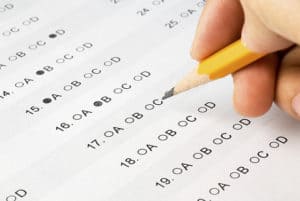 The last few weeks of school can be a challenging time. You might find yourself rushing to finish projects, complete curriculum and bring closure to the school year. In the midst of all of this end-of-year frenzy, many will ask students to pause and think about all they have accomplished and what they still have to learn, as a means of self-reflection.
The last few weeks of school can be a challenging time. You might find yourself rushing to finish projects, complete curriculum and bring closure to the school year. In the midst of all of this end-of-year frenzy, many will ask students to pause and think about all they have accomplished and what they still have to learn, as a means of self-reflection.
Shouldn’t we ask the same of ourselves? Wherever you may be in your Singapore Math journey, reflection can be a valuable tool for continuing to improve your practice.
As you wrap up the year, take a moment to reflect on the following.
Celebrate the successes.
 Maybe a particular lesson or unit stands out to you as one in which your students made the most progress or you felt the most confident with your instruction. Maybe you were able to reach that struggling student by approaching the concept in a different way or for the first time in recent years, your students enjoyed math. At the close of one of my lessons, I recall a fourth-grade student asking me if all our math classes could be like this one. Her comment caused me to pause and think about what we had done that she found so engaging and fun and I made a point to model more lessons in that way.
Maybe a particular lesson or unit stands out to you as one in which your students made the most progress or you felt the most confident with your instruction. Maybe you were able to reach that struggling student by approaching the concept in a different way or for the first time in recent years, your students enjoyed math. At the close of one of my lessons, I recall a fourth-grade student asking me if all our math classes could be like this one. Her comment caused me to pause and think about what we had done that she found so engaging and fun and I made a point to model more lessons in that way.
Think about how what you did made a difference and plan to do more of that in the upcoming year.
Acknowledge the struggles.
 Recognize the areas within your instruction that were a challenge for you. Maybe your students really struggled with a particular concept or maybe you left a lesson feeling like you needed a do-over. Now is the time to pinpoint those stumbling blocks and think about what support you might need to improve your instruction in those areas. It was my first year teaching a Singapore Math curriculum. With hesitation, I approached a lesson on problem-solving using the bar model. It was a complete flop. Reflecting on it, I realized I hadn’t allowed myself enough time to practice with the bar model and develop the confidence I needed to answer student’s questions on the fly. So, I made a plan to practice bar modeling with Thinking Blocks over the summer. (Thinking Blocks is one of our favorite tools for model drawing. Find an interactive desktop version at MathPlayground.com and four iPad apps on the iTunes store.)
Recognize the areas within your instruction that were a challenge for you. Maybe your students really struggled with a particular concept or maybe you left a lesson feeling like you needed a do-over. Now is the time to pinpoint those stumbling blocks and think about what support you might need to improve your instruction in those areas. It was my first year teaching a Singapore Math curriculum. With hesitation, I approached a lesson on problem-solving using the bar model. It was a complete flop. Reflecting on it, I realized I hadn’t allowed myself enough time to practice with the bar model and develop the confidence I needed to answer student’s questions on the fly. So, I made a plan to practice bar modeling with Thinking Blocks over the summer. (Thinking Blocks is one of our favorite tools for model drawing. Find an interactive desktop version at MathPlayground.com and four iPad apps on the iTunes store.)
Accepting your struggles and using them as a means to grow professionally, will strengthen your instruction and ultimately, improve your practice.
Set a goal for next year.
Did you try something new this year that you would like to incorporate in more of your lessons? Is there an area within the content that you would like to improve your understanding and confidence? Do you have an idea about how to approach a concept differently? Take a moment to imagine what you want the year ahead to look like and set a goal to make it happen.
 As you pack up your room and head off into summer bliss, know that you will return to the new school year with an awareness of all that you gained by reflecting on your practice.
As you pack up your room and head off into summer bliss, know that you will return to the new school year with an awareness of all that you gained by reflecting on your practice.







































